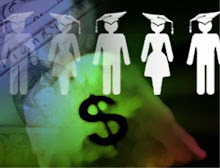Wednesday, October 22, 2008
Credit Card Scam
One reason more and more college students are find themselves in debt could be contributed to the credit card industry. A recent article by CQ researcher found that between 1980 and 2005, Americans' annual credit card purchases jumped 25-fold — from $69 billion to $1.8 trillion and even worse credit card companies seem to be targeting college students, with many students receiving hundreds of credit card offers in just one year. Credit companies unfairly target student because of the expense of college life and many students who but into these companies schemes end up in debt. Many university officials and congressmen have begun investigating these companies and placed restrictions on how credit cards can be marketed t public universities. With financing from the Ford Foundation, U.S. PIRG has begun a national campaign urging schools to adopt some common-sense principles that would help shield students from credit card marketers and financial ruin. Hopefully with a better education on the damages of credit cards and more protection from greedy companies students will be able to make wise decisions regarding credit cards and focus on more important and manageable issues such as paying off student loans.
Subscribe to:
Post Comments (Atom)

3 comments:
Caitlin,
The growth of the credit card industry is completely ridiculous, but why has the industry expanded so drastically? Also, how successful have officials been at reducing credit card marketing at universities? Finally, on average, what debts do credit cards accumulate for students each year?
Tommy
Caitlin,
Great post! Credit card companies definitely do target college students, who are already on tighter budgets. Do you think this happens because students are unaware of credit card terms and don't have a clear understanding of interest rates, etc.?
Dear Tommy and Britney,
First of all thanks for the comments. To answer your questions one of the main reasons that credit card companies have been able to expand and take advantage of students is very similar to the reason why the mortgage crisis occurred...no government regulation. Some examples of practices that are considered unfair and cause trouble for consumers are charging customers with late fees for payments that arrive on the due date but after an arbitrary cutoff hour which can be as early as 9 a.m., raising interest rates suddenly and with no stated reason for customers in good standing, applying new higher interest rates to existing balances not just future purchases, and requiring customers to bring disputes before professional arbitrators rather than the courts — even when the disputed debt may have resulted from identity theft.A study by Nellie May shows that in 2004, the average undergraduate owed $2,169 on credit cards, while the average graduate student owed $8,612 in 2006. I do believe that sometimes students are unclear of their credit card terms and are misled into opening credit card accounts resulting in increased debt. According to Benjamin Lawsky, deputy counsel to the New York State attorney general, students approached on campus often mistakenly believe that their school supports the cards or screens credit card companies that solicit on campus.CQ researcher points out that credit card marketing campaigns on campus often "extol the benefits of 'responsible use' " but don't tell students how to accomplish it or explain the downsides. These factors all play a role in the increased credit debt among students.Some states, such as Ohio and New York, are investigating credit card marketing on their universities campus's and have passed regulations but the federal government has not had to step in so far.
Post a Comment